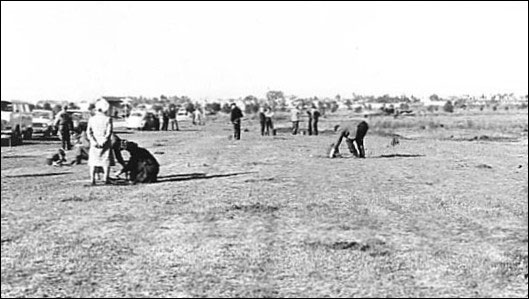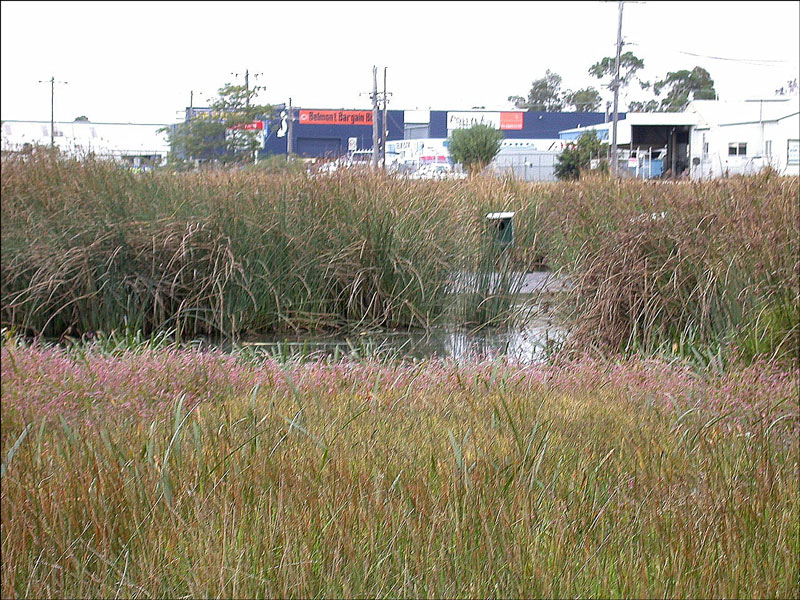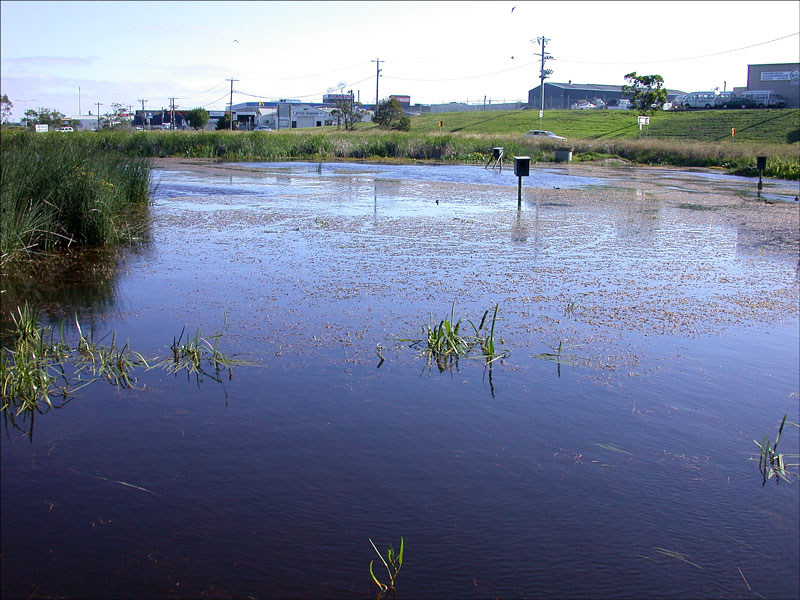When you live in a city it's great to be able to visit a birdy spot within a few minutes from home, and you never know what you're going to find.
Jerringot, on Belmont Common, is an urban wetland that gets a mention occasionally on the Eremaea webpage http://www.eremaea.com because a birder has seen something interesting there. It is next to a busy road and small industries in the middle of a suburb of Geelong. The whole of the Common along the Barwon River has been highly modified since European settlement - market gardens, farms and air strips in the past, playing fields, golf courses, playgrounds and walking trails at present and continual threats from road construction, rowing tracks and changes in drainage.
Jerringot itself is highly modified and unnatural but is in an area that would always have been swampy. It has areas of reedy swamps, low woodland and open water. A birdhide has been constructed and there is a walking track. For the last 35 years the Field Naturalists Club has planted, weeded, cleared rubbish, put up interpretive signs, installed seats, communicated with council, constructed the birdhide and nesting boxes, compiled bird and plant lists. A few people can make a difference. Valda Dedman's photo below was taken at the first tree-planting in 1973. Valda is still a passionate guardian of Jerringot.
When the water dried up completely earlier this year the council was able to get in with an excavator to dig out some of the silt and clear some of the reed beds and at the water levels are high again because we have had a 'rain event' recently. The levels will drop over the summer and we get excited about the possibility of seeing crakes and rails feeding on the exposed mud near the reeds.
The bird list for this small reserve is impressive – over 130 species. It includes Freckled Ducks, seen there last month, Red-kneed Dotterels, Magpie Geese, Cattle Egrets that come in to roost, Royal Spoonbills and Little Bittern. Land birds such as Olive-backed Oriole, Horsfield's Bronze-cuckoo, White-winged Triller, Grey Shrike-thrush and Grey Goshawk have been seen there. Jerringot is a site of State significance because of the number of Latham's Snipe that feed in the reed beds each summer (more than 200 in some years). Crakes and rails find the exposed mud near the reed beds attractive. We have seen Buff-banded Rails, Spotted Crakes and Spotless Crakes and Baillon's Crake (The latter is a bird I have yet to see – my excuse is that it's tiny and my eyes aren't what they used to be!)
If you're passing through Geelong take the time to visit Jerringot, Barwon Heads Rd, Belmont. I'm glad it's in my patch. I'm told that a Growling Grass Frog Litoria reniformis was calling there this week so I'm heading down there to check it out.



3 comments:
Looks like a great little spot Boobook. We need to do all we can to preserve these sorts of refuges. Keep your eye out for your Baillon's. Saw my first one last year at the tiny Heyfield Wetlands in Gippsland.
Hi Boobook, Can I use your text and images on my new geelong site (currently building) www.geelong.ws ? Thanks J
That's OK Jamie, as long as you reference the source. Good luck
Post a Comment